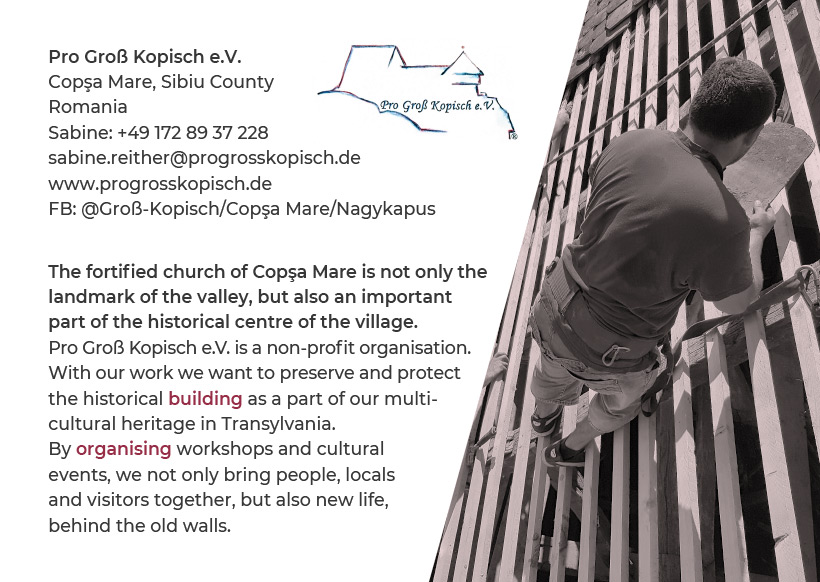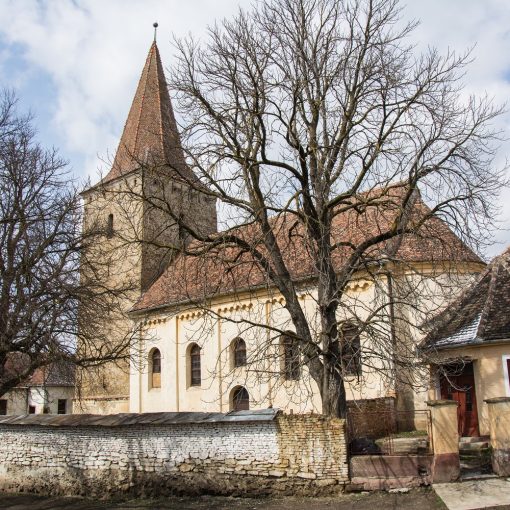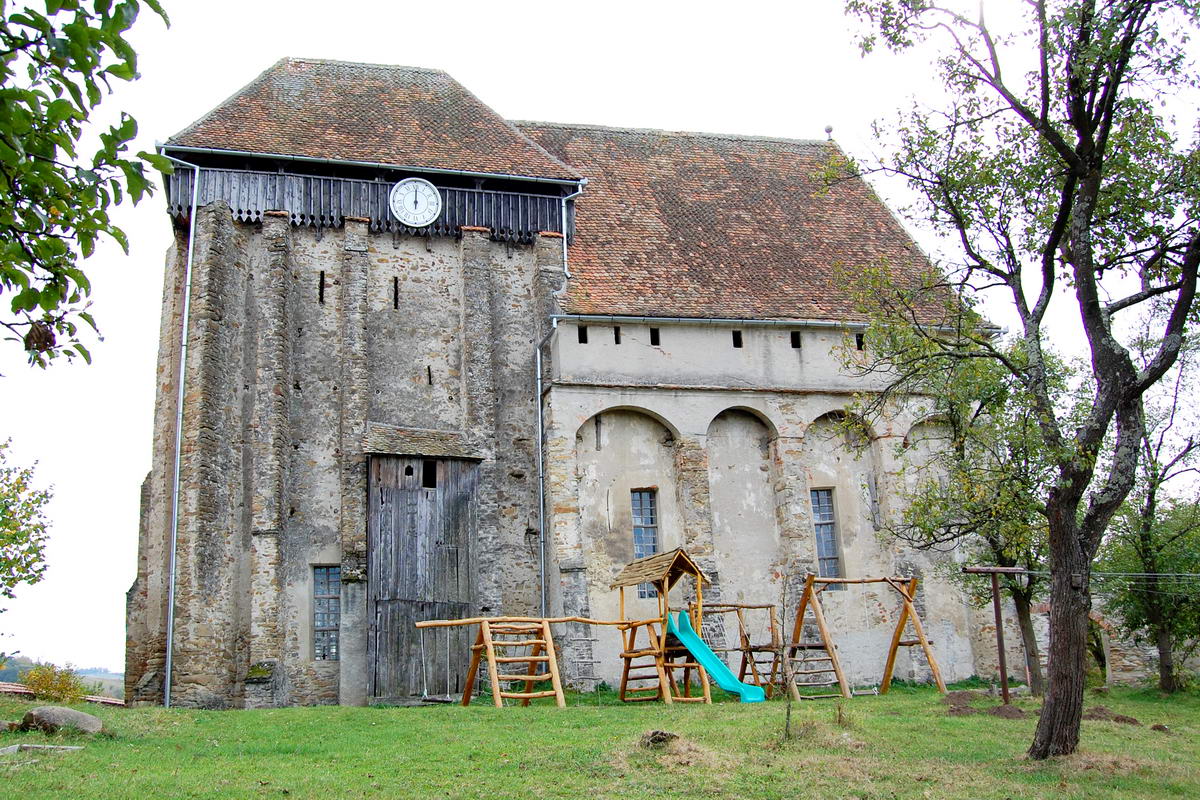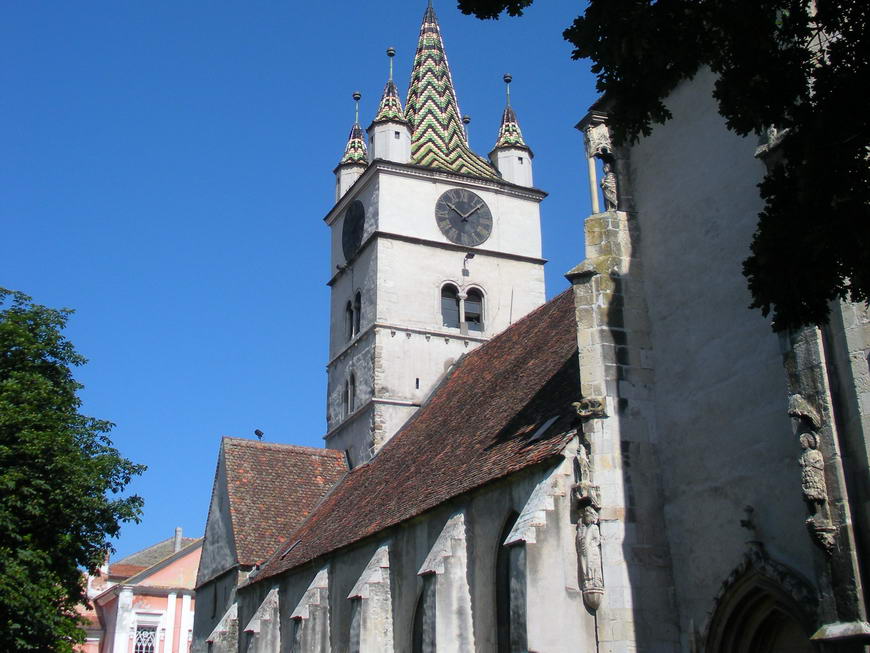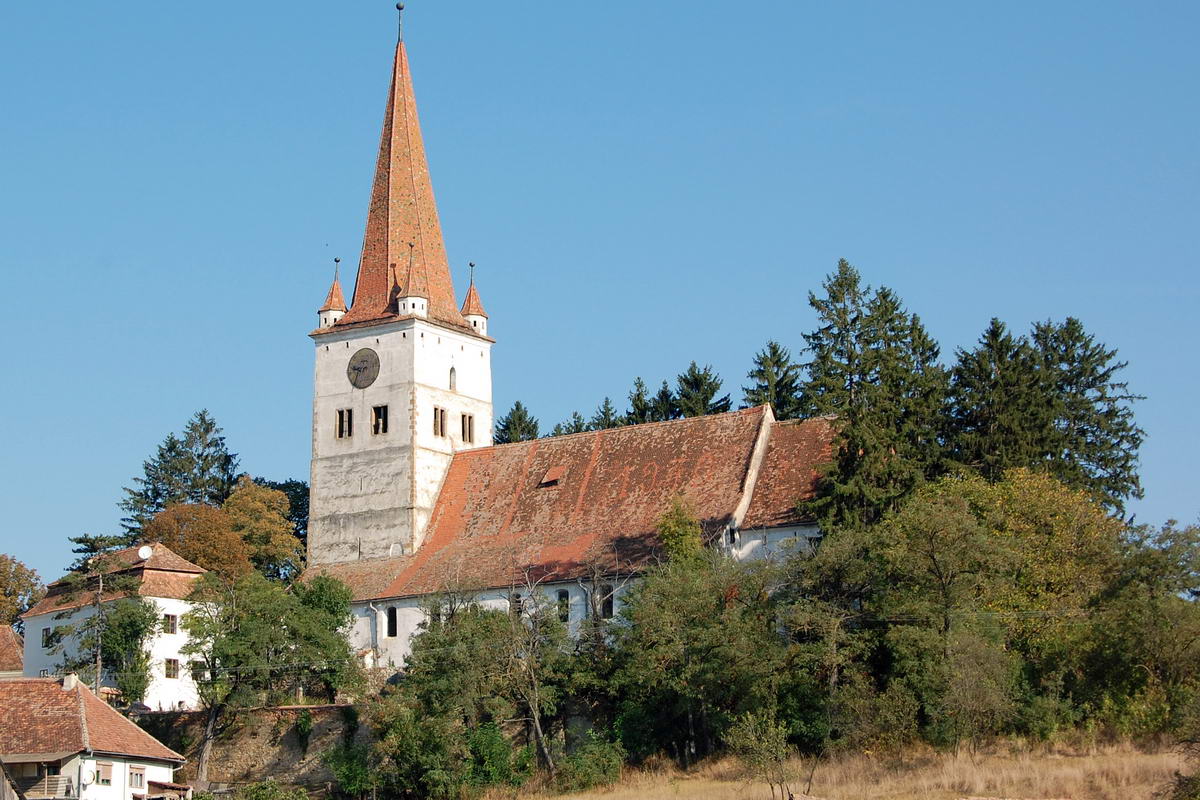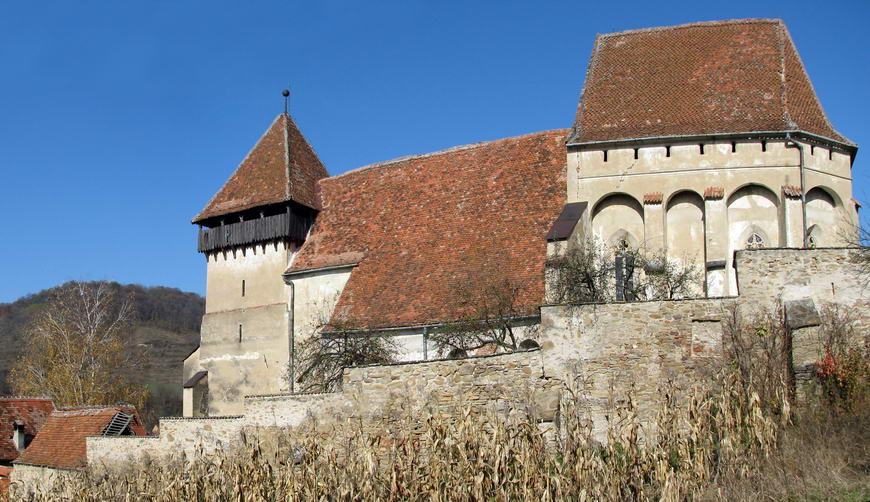
On the eastern hill above the village an early Gothic basilica with tower was first erected. Around 1510 the church was fortified, thus the old chancel was demolished and replaced by a high chancel with polygonal closure strengthened by a defence level built in stone. Due to its height of almost 11 meters and its defence systems the chancel protected the ensemble against the slope. A wooden defence level was built on the tower. The chancel still preserves its stellar vault and the fine tracery on the windows originating from the construction time of the church, but the nave was rebuilt in 1795 in Baroque style. On the northern side of the chancel stands the two-leveled sacristy dated 1519. On its second level a chapel was set up. Especially valuable are the Renaissance portal of the sacristy and the Neoclassical altar.
Place and surroundings
The place was most probably established end of the 13th Century. Already at the beginning of the 14th Century the settlers have erected a stone church, whose foundations are still preserved nowadays, despite numerous renovations and enlargements. But the houses in the village were originally built with less durable materials. The wood from the surrounding forests was in the early days the most important building material. Cracks between the logs were clogged with moss and clay, while the roofs were covered with straw resulting after the wheat harvest. The windows were closed with extensive animal bladders, allowing only a faint light to pass, which could barely spread the darkness of the rooms.
Starting with the 18-19th Century it became common to build houses out of bricks. During that time the typical Transylvanian farms were erected and they still guard aligned the paths of the village.
Activities
- 2019 Emergency measure for stabilizing the vault
- 2017 Emergency measure for stabilizing the sacristy
On site, the association Pro Groß Kopisch is committed to the preservation and revitalisation of the fortified church.


